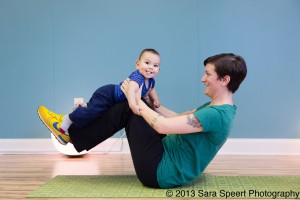The Wall Street Journal published an article this week detailing the many physical conditions and concerns that some women deal with during the postpartum period. You can read the article here.
I have to admit, the Wall Street Journal’s recent article on physical pain and conditions post pregnancy is one of the most depressing things I’ve read in a long time. While I’m all about educating women on pre and postnatal wellness, it makes it sound like not only are moms doomed to a lifetime of “baby weight”- they are also going to be stuck with, according to the article, back pain, compromised abdominals, incontinence, hip pain and c-section muscle pain. Yikes! As a pregnant woman reading the article, I became increasingly frustrated, thinking, “Yeah, so what can I DO about all of this??”
Luckily, because of my work, I know there is PLENTY that both pregnant women and new moms can do to both prevent and treat these conditions. A key point is that you DON’T and SHOULDN’T suffer through any of the above problems or pain—there is help.
Just from the Oh Baby! blog and YouTube channel alone I was able to find a whole host of tips and solutions for women experiencing these conditions. I wish the WSJ would have included some help for women, but we’ll do our best to step in with some answers. Here’s a list of resources that will help combat common postpartum issues:
Back pain, hip pain and compromised abdominals:
1- Check yourself for Diastasis Recti (separation of the abdominals, which sometimes occurs during pregnancy).
2- After baby, begin abdominal work with hollowing to repair any abdominal separation.
2- When pregnant, be sure to focus on building your transverse or inner abdominals.
Pelvic Health and C-section Recovery:
1- Learn how to properly perform a Kegel and make them a regular part of your day both when pregnant and postpartum. A Kegel is the FIRST exercise you can do immediately after giving birth. It will help you recover quicker and lessen your chances of incontinence.
2- Squats and lunges are a key to a healthy pelvic floor as well.
3- Find a Physical Therapist in your area if you are experiencing incontinence (urine leakage) 4-6 months after the birth of your baby. (We highly recommend One on One Therapy if you are in Atlanta)
Postpartum return to exercise:
1- Begin exercise slowly. Start by building up your abs and pelvic floor by doing these 3 exercises.
2- You can run postpartum once your pelvic floor is recovered and strong enough.
As I wrote above- you can and should do something about managing postpartum pain and conditions- you don’t need to suffer. What did you do after baby that helped you recover physically? What do you wish you’d done differently?
-Kathleen Donahoe, Co-owner and Senior Instructor, Oh Baby! Fitness






